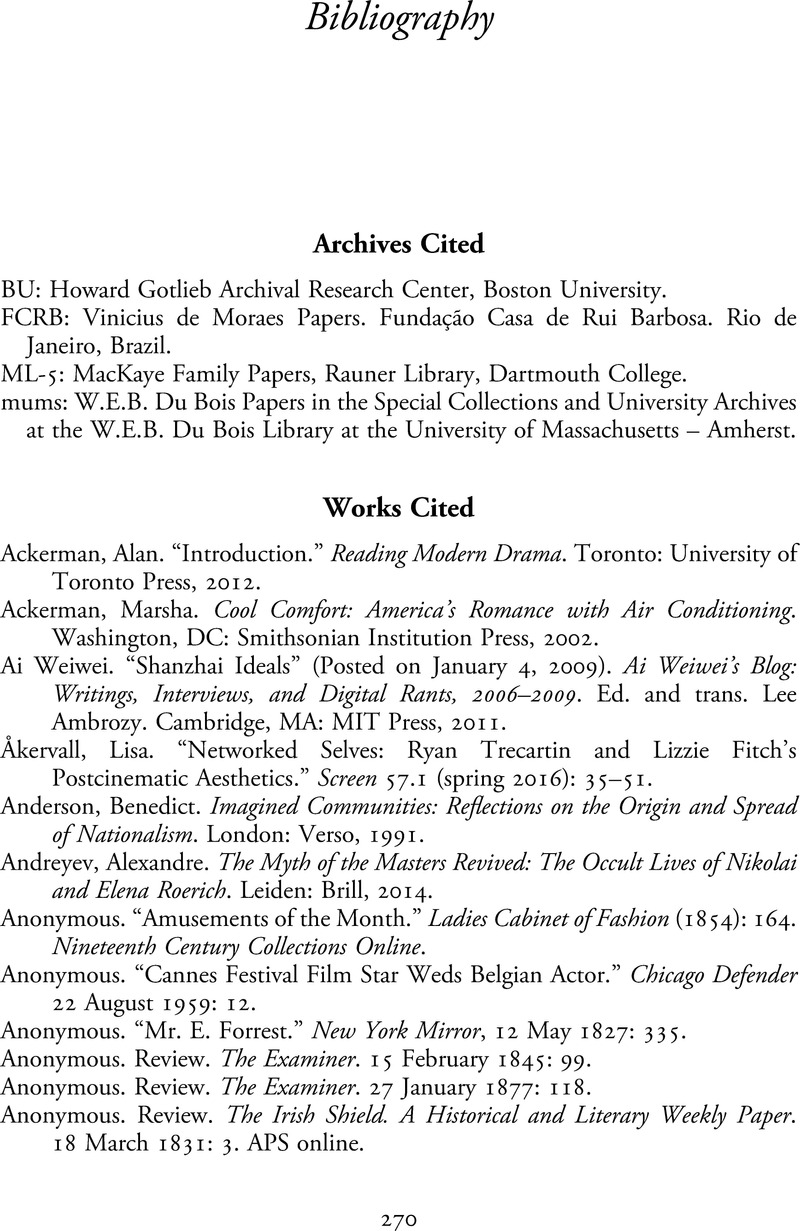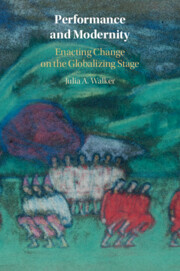Book contents
Bibliography
Published online by Cambridge University Press: 09 December 2021
Summary

- Type
- Chapter
- Information
- Performance and ModernityEnacting Change on the Globalizing Stage, pp. 270 - 288Publisher: Cambridge University PressPrint publication year: 2022



